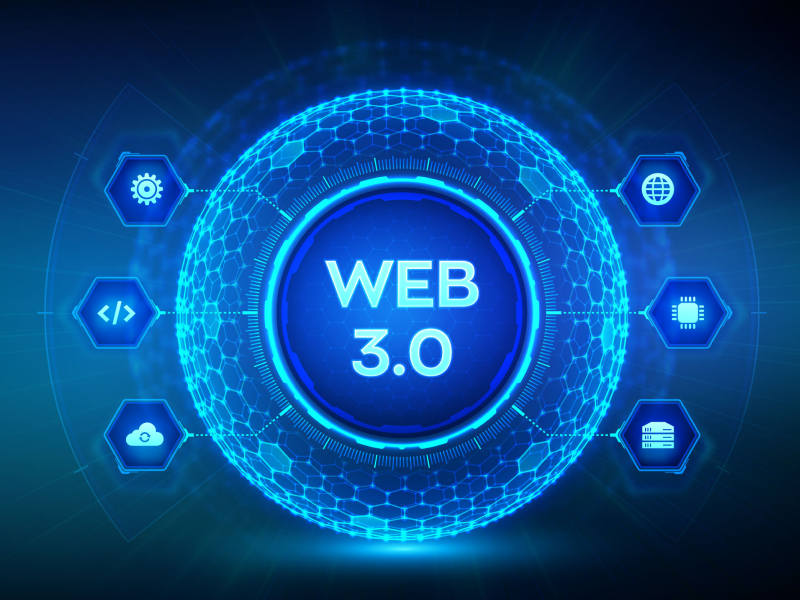
- September 22, 2023
- admin
- Technology
The internet has evolved significantly since its inception. From static web pages in Web 1.0 to the interactive and social media-driven Web 2.0, we are now on the brink of the next phase: Web 3.0. But what exactly is Web 3.0, and why is it generating so much buzz? Let’s dive in.
What is Web 3.0?
Web 3.0, often referred to as the “semantic web”, represents a new paradigm for applications on the internet. It aims to make online data more interconnected and machine-readable, enabling computers to understand the context and meaning behind data.
Key features of Web 3.0 include:
- Decentralization: Unlike the centralized platforms of Web 2.0, Web 3.0 emphasizes peer-to-peer interactions without intermediaries.
- Interoperability: Different applications and platforms can seamlessly interact and exchange data.
- User Sovereignty: Users have control over their own data, identities, and transactions.
- Semantic Understanding: Enhanced by AI and machine learning, the web can understand and interpret user requests and data contextually.
Uses of Web 3.0
Decentralized Finance (DeFi): Web 3.0 enables the creation of financial systems without traditional intermediaries like banks. Users can lend, borrow, or trade assets directly on decentralized platforms.
Decentralized Autonomous Organizations (DAOs): These are member-driven organizations run by pre-defined rules on the blockchain. They allow for decentralized decision-making and governance.
NFTs (Non-Fungible Tokens): Unique digital assets verified using blockchain technology, representing ownership of a specific item or piece of content.
Personal Data Ownership: Users can control and monetize their data, deciding who can access it and under what terms.
Enhanced Search: Search engines of Web 3.0 can understand context, making results more accurate and personalized.

Who Can Use Web 3.0?
Developers: Those who build decentralized apps (DApps) and platforms will be at the forefront, crafting the tools and platforms of the future.
Entrepreneurs: With new business models and opportunities emerging, entrepreneurs can create solutions addressing Web 3.0-specific challenges and needs.
Content Creators: Through NFTs and decentralized platforms, creators can have more control over their content and how it’s monetized.
General Users: Everyday internet users stand to benefit from a more personalized, secure, and user-centric online experience.
Investors: As the Web 3.0 ecosystem grows, there will be numerous investment opportunities in startups, tokens, and other digital assets.
Web 3.0 represents a transformative shift in how we interact with the internet. It promises a future where users are in control, platforms are decentralized, and machines understand context. As with any technological evolution, there will be challenges, but the potential benefits of a more open, user-centric, and intelligent web are immense.
Whether you’re a developer, entrepreneur, content creator, or just an internet user, the Web 3.0 wave is worth catching. The future of the internet is decentralized, and it’s closer than you think.
Categories
- Artificial Intelligence (19)
- Bigquery (7)
- Business (38)
- Chat GPT (6)
- Code (5)
- Data Science (23)
- Data Visualization (28)
- Google Ads (4)
- Google Analytics (19)
- Google Analytics 4 – GA4 (22)
- Google Bard (5)
- Google Cloud (6)
- Google Looker Studio (4)
- Google merchant center (2)
- Google tag manager (10)
- Healthcare (2)
- Hindi (6)
- Javascript (3)
- Migration (1)
- Natural Language Processing (5)
- NLP (3)
- Prestashop (3)
- Reports (10)
- SEO (1)
- Server-Side Tracking (10)
- Social Media (15)
- Technology (35)
- web design (2)
- web development (5)
- आर्टिफिशियल इंटेलिजेंस (5)
- एआई (5)
- कृत्रिम बुद्धिमत्ता (6)
- गूगल बार्ड (3)
- डेटा विज्ञान (1)
- डेटा साइंस (1)

